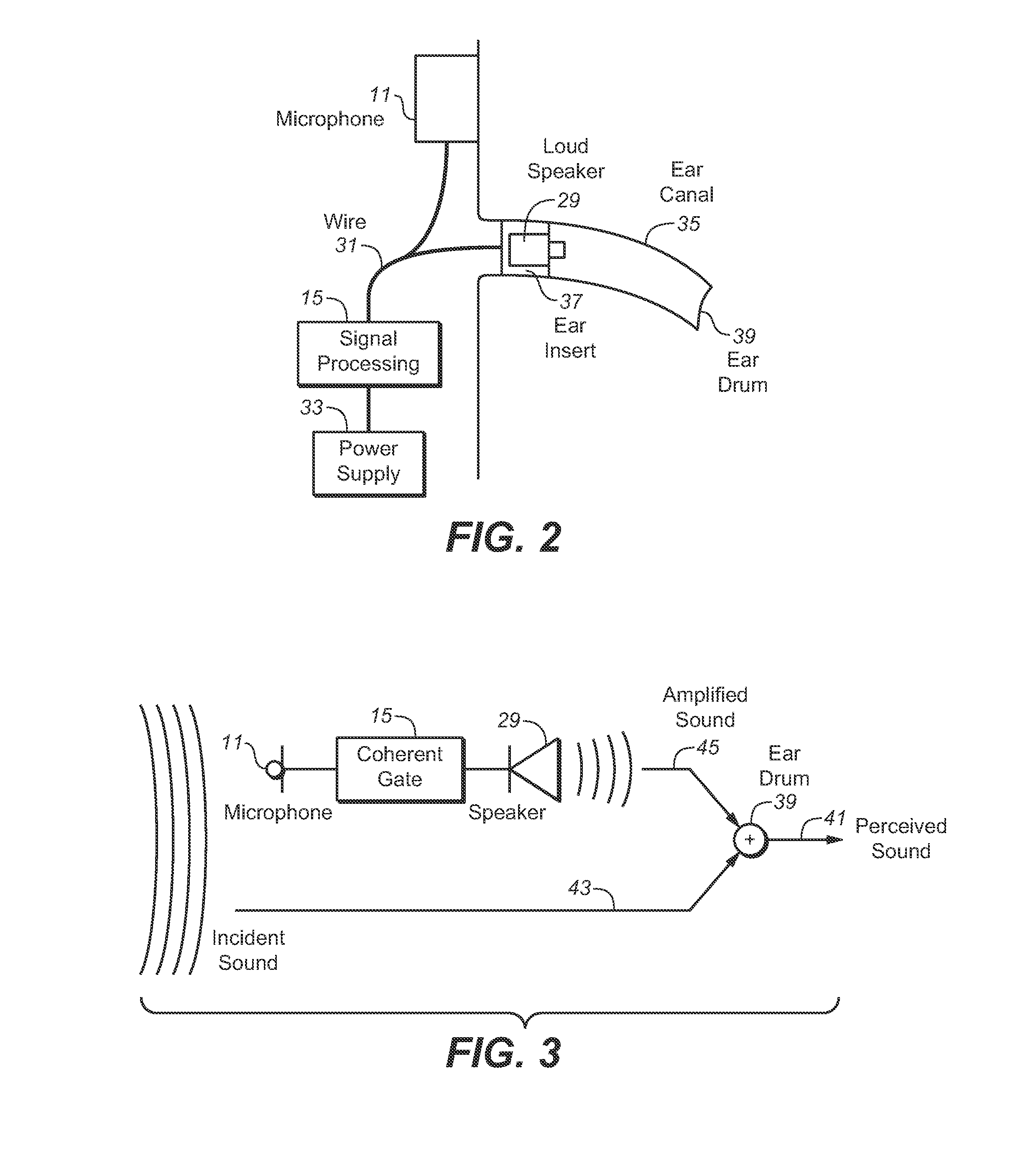Hearing aid having level and frequency-dependent gain
a frequency-dependent gain and hearing aid technology, applied in the field of hearing aids, can solve the problems of not being well suited to persons with hearing loss, open ear hearing aids have significant drawbacks, and have inherent limitations in the amount of gain they can provide, so as to improve the sound quality perceived by users, avoid the effect of extreme artifacts, and increase the number and quality of spatial cues available to users
- Summary
- Abstract
- Description
- Claims
- Application Information
AI Technical Summary
Benefits of technology
Problems solved by technology
Method used
Image
Examples
Embodiment Construction
[0040]Referring to the drawings, FIG. 1 illustrates in block diagram form an embodiment of a hearing aid in accordance with the invention, generally denoted by the numeral 10, wherein input (incident) sound is transduced by the microphone 11 and digitized by an analog-to-digital converter 13 for digital processing. (It will be understood that the invention is not limited to digital processing, and could be implemented instead with analog components.) The signal is then passed through a signal processing circuit having a coherent gate 15 comprised of a filter 17, a gain control function 19 for providing variable gain, and preferably a later described dynamic control function represented by block 18. The filter's parameters (shape, bandwidth, gain structure, etc.) are set via a settings function within the coherent gate as represented by settings block 20. When in a settings or programming mode, the parameters of the coherent gate (including frequency and gain, among others) can be se...
PUM
 Login to View More
Login to View More Abstract
Description
Claims
Application Information
 Login to View More
Login to View More - R&D
- Intellectual Property
- Life Sciences
- Materials
- Tech Scout
- Unparalleled Data Quality
- Higher Quality Content
- 60% Fewer Hallucinations
Browse by: Latest US Patents, China's latest patents, Technical Efficacy Thesaurus, Application Domain, Technology Topic, Popular Technical Reports.
© 2025 PatSnap. All rights reserved.Legal|Privacy policy|Modern Slavery Act Transparency Statement|Sitemap|About US| Contact US: help@patsnap.com



